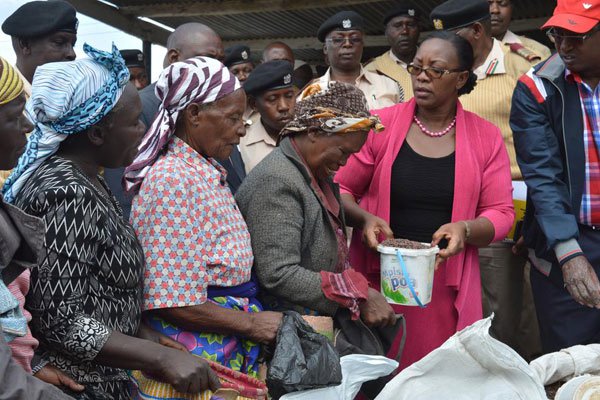The number of Kenyans in need of relief food has risen to 2.7 million from 1.3 million last year, a government agency has said.
The National Drought Management Authority (NDMA) said most of those affected by the crisis were the elderly, the sick, mothers and children under the age of five.
“The current drought phase classification indicates that the trend is worsening in most counties,” states the agency in its report for January 16-27.
The numbers represent about 20 per cent of the population in pastoral areas and 18 per cent in marginal agricultural areas.
“The situation continues to deteriorate rapidly, particularly in nine arid counties namely: Turkana, Marsabit, Samburu, Tana River, Isiolo, Mandera, Garissa, Wajir and Baringo,” states the report by the Kenya Food Security Steering Group — a multisectoral and multiagency body that brings together relevant government sectors, UN agencies and non-governmental organisations under the leadership of the NDMA.
The assessment report has also identified drought affected pockets of counties that are neither arid nor semi-arid lands (Asal) such as Elgeyo-Marakwet, Bomet, Kisumu, Busia, Kakamega, Homa Bay and parts of central Kenya.
“In areas around Lake Victoria, parts of western and central region, significantly below normal rainfall affected crop performance, resulting in decline of yields.
“For instance, maize yields dropped by 50 per cent, beans by 40-50 per cent and sorghum by 30 per cent compared to 2015,” it adds.
In Kisumu, Busia, Kakamega, and Homa Bay counties, the poor performance of the long rains caused crop failure except for crops planted early, where only 40 per cent of the expected yield was realised.
CROP FAILURE
In other lowland areas, 50-70 per cent reduction in yields was reported.
“It is estimated that population in need of relief assistance in the non-Asal pockets is about 300,000,” says the agency.
In most counties, especially Kilifi, Lamu and Tharaka-Nithi, maize is a near total failure, while the production of beans, green grams and cowpeas is expected to be below normal.
The next major harvest from these regions is not expected until the end of February 2018, says the report, implying that most households will depend on markets throughout 2017.
Maize prices are, therefore, expected to increase through 2017.
“Livestock prices are falling in tandem with decline in body condition. For instance, goat prices in December were as much as 25 per cent below their five year averages and 2015 prices.
“Demand is low, while in some places, such as parts of North Horr, livestock markets are not operational. Prices are expected to continue falling as the condition of livestock deteriorates,” says the agency.
LIVESTOCK IN DANGER
According to the report, the drought has left both pastoral and marginal agricultural areas across the country experiencing drier than usual conditions.
“Forage conditions are drier than usual because of the poor performance of the 2016 short rains, the extended dry period between the 2016 long and short rains, and hotter than normal land surface temperatures,” says the agency.
Turkana (North, Kibish) and Mandera have borne the biggest brunt of depleted pasture, while southern parts of Mandera register depleted vegetation.
Already, livestock deaths have been reported in Marsabit, Garissa, Kilifi and Turkana counties, with more expected as the drought worsens.
“Drought stress is causing unusual patterns of livestock migration. I
“In some arid counties, around 70 per cent of livestock has migrated, including into neighbouring countries, which is not normal for this time of year.
“There is a high concentration of livestock in northern parts of Isiolo. As forage declines in dry season grazing areas such as Tana Delta, livestock are moving towards Meru National Park, Tsavo East National Park and Lamu,” shows the report.
©Alleastafrica and Daily Nation



